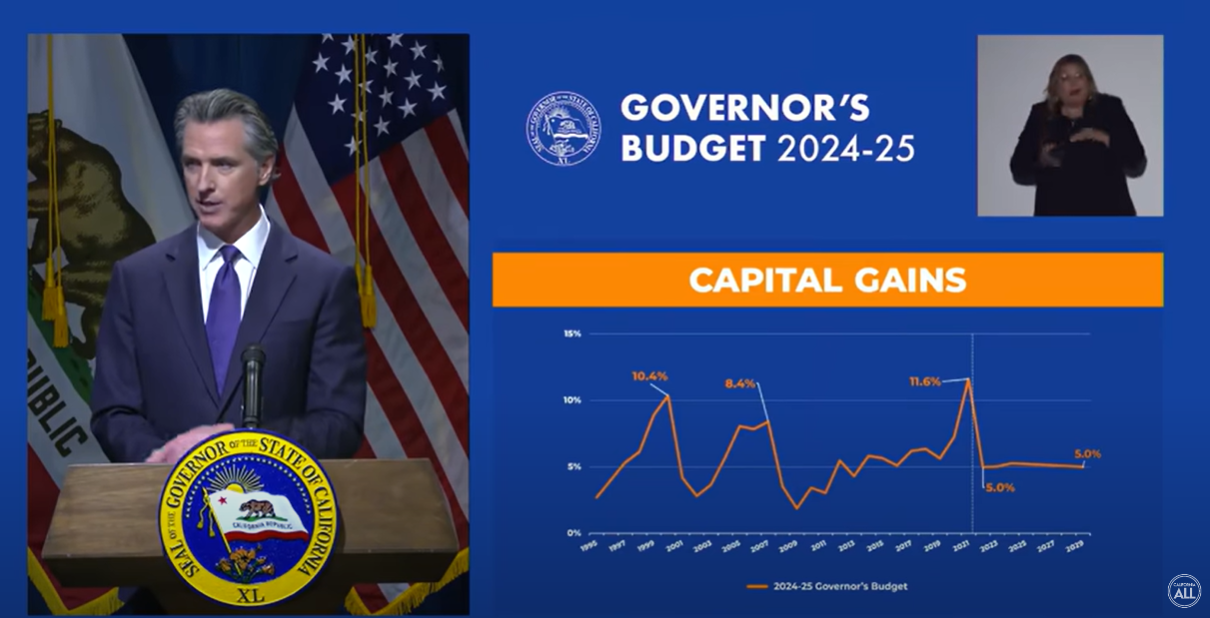During the week of May 13, 2024, we got more details on Governor Newsom’s May Revision to the 2024-2025 state budget and how the state budget crisis will affect state parks in the upcoming year, and potentially into 2025-2026.
The budget process in California commences with the Governor's budget proposal typically released in early January, setting the stage for fiscal planning. This initial proposal outlines funding priorities across key sectors. Following extensive review and analysis, in May, the Governor revises the budget based on updated economic forecasts, revenue projections, and emerging needs, known as the May Revision. This revised proposal serves as a crucial midpoint in the budget process, informing deliberations in the State Legislature. Finally, by June 15th, the Legislature must pass a final budget bill or sacrifice legislators’ pay for every day the budget is late. The final budget reflects compromises, adjustments, and appropriations necessary to address the state's diverse challenges and meet the needs of its nearly 40 million residents. The Governor must sign or veto the budget by June 30; the Legislature can overturn a veto with a 2/3 vote.
California’s budget relies heavily on capital gains tax receipts for revenues, leaving the state vulnerable to wild swings in its finances. In 2020-2021 and 2021-2022, the state posted record budget surpluses, but fortunes started to turn last year, and the picture for the upcoming fiscal year and the year after that has worsened.
Of course, in a deficit situation, tough choices must be made. The Governor has proposed a two-year approach to the problem. Two of the biggest cuts, elimination of 10,000 empty positions across state departments and a 7.95 percent cut across the board to operations, are so complex to implement that they won’t fully take effect until next year. This is relatively good news because the budget picture could improve by that time.
Even if positions are empty, California State Parks receives funding in the form of “salary savings.” This is why eliminating otherwise unfilled positions would save the state money. However, even though California State Parks currently has many open positions, relatively few of them are funded exclusively with General Fund dollars (the funds that are in shortest supply). For example a major source of funding for state park operations is the State Parks and Recreation Fund, the destination for permit and use fees, and a fund that California State Parks controls.
In any event, It’s entirely possible that many park districts will ultimately keep empty positions. California State Parks Foundation will continue to closely monitor the implementation of these cuts as more information becomes available.
However, other proposed cuts will have a much more immediate and devastating effect on high-impact priorities like equal opportunity access to state parks and building the state park system’s resilience to climate change. These are:
-
California State Library Parks Pass:
-
California State Library Parks Pass: Funding for this popular and effective program was not restored in the Governor’s May Revision, despite significant data indicating that it functions precisely as intended — broadly supporting access for communities that experience financial barriers to visiting parks. Acknowledging that all belts need to be tightened, California State Parks Foundation is now urging legislators to restore $3 million to fund the program at a reduced level, but one that will still support free state park access for Californians across the state. Join our effort to take action on park access NOW!
-
-
Outdoor Equity Grants:
-
Created by AB 209 (Limón) in 2019, this program grants funding to groups facilitating park access across the state, . After proposing a $25 million cut to grantmaking in 2024-2025 in January, the Governor’s May Revision proposal now widens the cut to $50 million, zeroing out all funding for the program. Here are examples of the programs funded in past rounds of this grant program.
-
-
Sea level rise adaptation:
-
California State Parks manages a quarter of the state’s coastline across 128 coastal park units stretching from Pelican State Beach at the Oregon border to Border Field State Park, which borders Mexico. Yet in 2021, California State Parks only received about 1% ($11.5 million) of a $1 billion statewide package for nature-based solutions to climate change to begin planning for the effects of sea level rise on California's state beaches. As we reported earlier this year in our first-of-its-kind report “Building Climate Resilient State Parks,” if the worst forecasts for sea level rise come to pass, California will lose 75% of its beaches by 2100. Adapting and planning for sea level rise is urgent, and this tiny pot of funding has resulted in 24 carefully planned projects across the state that are ready to go. However, the Governor has proposed cutting more than half of that funding now, and planning will have to cease if the cut stands, potentially setting back urgently needed work by years.
-
There are two solutions for the Legislature: First, restore the $6.7 million in funding for sea level rise adaptation that the Governor is proposing to cut. Second, the Legislature must place a climate resilience bond on the November 2024 ballot with significant resources for California State Parks. California State Parks Foundation, along with our partners, has proposed investing $500 million in deferred maintenance and planning (which would include adapting to sea level rise) and $250 million in acquiring new state park lands.
Join our effort to urge climate resilience bond investments NOW!
Park advocates like you can help reverse these potentially devastating cuts. Together, we can let the Legislature know how much our state parks need support by completing these Action Alerts today!
